存储结构
说明:本次讲解的HashMap是jdk1.8中的实现,其他版本可能有差异
内部是由Node节点数组组成,Node节点之间又由链表或红黑树组成。
图是网上找的,实在不想画
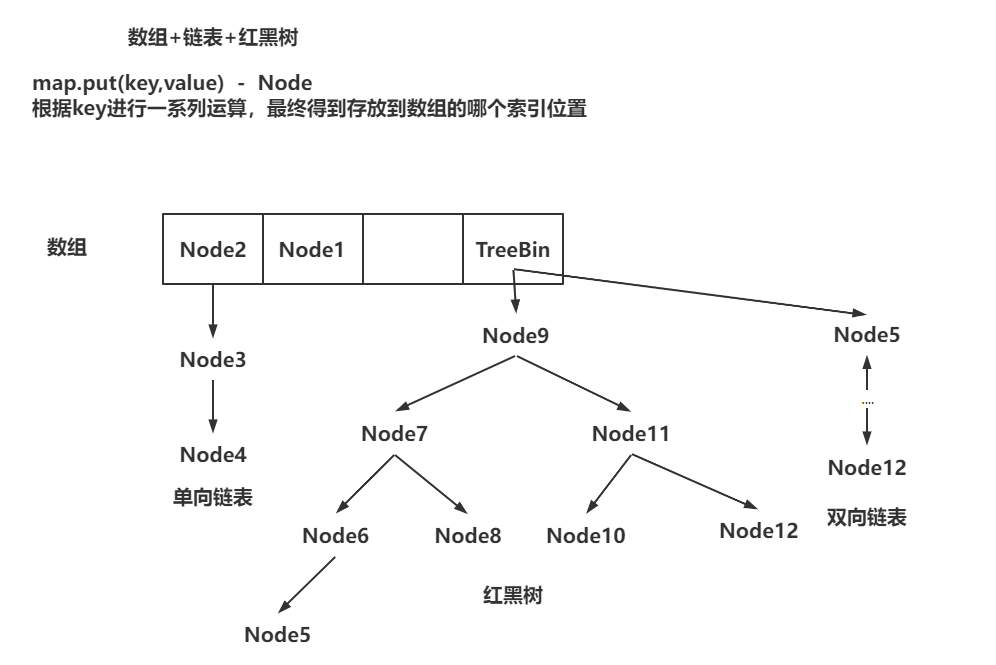
属性介绍
//存储数据的数组,初次使用时初始化,分配的长度总是2的冥次方
transient Node<K,V>[] table;
/**
* Holds cached entrySet(). Note that AbstractMap fields are used
* for keySet() and values().
*/
transient Set<Map.Entry<K,V>> entrySet;
//容器中包含的所有元素数量
transient int size;
//代指HashMap结构被修改的次数,结构修改是指更改HashMap中映射的数量或以其他方式修改其内部结构的修改
transient int modCount;
//下一次扩容的大小值 (capacity * load factor)
int threshold;
//扩容系数
final float loadFactor;
构造方法
HashMap有4个构建方法,主要作用就是初始化存储数组容量、扩容系数、下一次触发扩容大小
public HashMap(int initialCapacity, float loadFactor) {
//初始容量,不能小于0,否则抛非法参数异常
if (initialCapacity < 0)
throw new IllegalArgumentException("Illegal initial capacity: " +
initialCapacity);
//容器超限了,则默认设置为最大值,2^30次方
if (initialCapacity > MAXIMUM_CAPACITY)
initialCapacity = MAXIMUM_CAPACITY;
//扩容系数设置不对,也会抛出异常
if (loadFactor <= 0 || Float.isNaN(loadFactor))
throw new IllegalArgumentException("Illegal load factor: " +
loadFactor);
this.loadFactor = loadFactor; //设置扩容系数
//根据设置的初始数组大小计算下次触发扩容时的大小,初始情况下threshold也表示数组的初始大小,这个可以通过resize()方法中看到
this.threshold = tableSizeFor(initialCapacity);
}
public HashMap(int initialCapacity) {
//调用第一个构造方法,loadFactor默认0.75
this(initialCapacity, DEFAULT_LOAD_FACTOR);
}
public HashMap() {
//只设置loadFactor,默认0.75,其他字段都默认值
this.loadFactor = DEFAULT_LOAD_FACTOR;
}
public HashMap(Map<? extends K, ? extends V> m) {
this.loadFactor = DEFAULT_LOAD_FACTOR;
putMapEntries(m, false); //创建新的hashmap,并把原来的m内容填充进去
}
散列算法
static final int hash(Object key) {
int h;
//h >>> 16 hash值右移16位,实际上就是将高16位通过右移到低16位,然后通过与原hash值异或处理,使高16位也参与到索引数组位置的计算当中,这样做的好处是为了同时保留高16位于低16位的特征,让哈希后的结果更均匀的分布,减少hash冲突,提升hashmap的运行效率。
return (key == null) ? 0 : (h = key.hashCode()) ^ (h >>> 16);
}
HashMap是根据hash值,通过以下方式计算存储的位置:(数组长度 - 1) & (h ^ (h >>> 16))
(n-1) & hash判断元素存放的位置,n等于数组的长度,与运算相当于取余运算(计算效率较取余运算更高)。假如不做 (h >>> 16) 右移运算,那么hash仅是最后四位和1111运算(假如数组长度为16)那么hash高位的信息就会全部丢失(比如,多个key的hashcode最后四位都是0000那么就会全部存储在索引为0的桶中产生冲突),如果右移16位就会将高位的信息与低位的16位异或运算,保留了高位与低位的特征更能体现key的hashcode的特征,降低冲突的概率。
put方法
public V put(K key, V value) {
return putVal(hash(key), key, value, false, true);
}
/**
* Implements Map.put and related methods.
*
* @param hash key的hash值
* @param key the key
* @param value 要存放的value
* @param onlyIfAbsent如果为true,那么容器中如果存在就不改变已存在的值;否则替换
* @param evict 意为逐出,在LinkedHashMap中有用,可以想像成LRU算法中对过期数据的删除
* @return previous value, or null if none
*/
final V putVal(int hash, K key, V value, boolean onlyIfAbsent,
boolean evict) {
Node<K,V>[] tab; Node<K,V> p; int n, i;
//初次进来table为空
if ((tab = table) == null || (n = tab.length) == 0)
n = (tab = resize()).length; //通过resize()方法初始化table数组,并得到数组长度
//(n - 1) & hash 根据hash取模求出在数组中的位置,并判断该位置是否已经有值,当前判断是无值状态
if ((p = tab[i = (n - 1) & hash]) == null)
//该索引位置没有值,那么创建新node,并赋值在该索引位置上
tab[i] = newNode(hash, key, value, null);
else {
//走到这里,证明当前索引位置已经有冲突了
Node<K,V> e; K k;
//如果hash和key的值同时相等,那么就认为是同一个值,直接覆盖原来索引位置下的节点(value值的覆盖取决于onlyIfAbsent或者原node的value是Null)
if (p.hash == hash &&
((k = p.key) == key || (key != null && key.equals(k))))
e = p;
else if (p instanceof TreeNode)
//走到这里,证明冲突的节点不是完全相同的,并且原节点已经是(红黑)树化的节点了,那新节点肯定也应该是TreeNode
e = ((TreeNode<K,V>)p).putTreeVal(this, tab, hash, key, value);
else {
//不是树,那就是链表,接下来执行链表的操作
for (int binCount = 0; ; ++binCount) {
//从链表头部开始遍历,一直到尾部,将新的node直接插入到尾部
if ((e = p.next) == null) {
//尾部插入
p.next = newNode(hash, key, value, null);
//判断链表节点数是否大于等于TREEIFY_THRESHOLD(默认8),这里-1的原因,就是没算进新创建的节点,超过了,那么要(红黑)树化
if (binCount >= TREEIFY_THRESHOLD - 1) // -1 for 1st
//链表转红黑树,转换条件:1.链表节点数大于8;2.数组长度大于MIN_TREEIFY_CAPACITY(默认64)
treeifyBin(tab, hash);
break;
}
//遍历链表的同时,判断有没有节点完全相同的,有的话,直接退出遍历
if (e.hash == hash &&
((k = e.key) == key || (key != null && key.equals(k))))
break;
p = e;
}
}
if (e != null) { // 存在相同的key
V oldValue = e.value;
//根据onlyIfAbsent的条件,判断是否覆盖原节点的值
if (!onlyIfAbsent || oldValue == null)
e.value = value; //覆盖原值
afterNodeAccess(e); //这也是个钩子方法,hashmap中没有实现
return oldValue; //返回原值
}
}
//修改次数加1
++modCount;
//size加1,并判断是否超过扩容触发条件,超过后重新扩容
if (++size > threshold)
resize(); //扩容
//这是一个钩子方法,留待子类实现,比如在LinkedHashMap中就有使用
afterNodeInsertion(evict);
return null;
}
//树化方法
final void treeifyBin(Node<K,V>[] tab, int hash) {
int n, index; Node<K,V> e;
//数组长度不足MIN_TREEIFY_CAPACITY(64)则不树化,只做扩容,避免数组节点都挤压(冲突)
if (tab == null || (n = tab.length) < MIN_TREEIFY_CAPACITY)
resize();
else if ((e = tab[index = (n - 1) & hash]) != null) {
TreeNode<K,V> hd = null, tl = null;
do {
TreeNode<K,V> p = replacementTreeNode(e, null);
if (tl == null)
hd = p;
else {
p.prev = tl;
tl.next = p;
}
tl = p;
} while ((e = e.next) != null);
if ((tab[index] = hd) != null)
hd.treeify(tab);
}
}
get方法
public V get(Object key) {
Node<K,V> e;
return (e = getNode(hash(key), key)) == null ? null : e.value;
}
/**
* Implements Map.get and related methods.
*
* @param hash hash for key
* @param key the key
* @return the node, or null if none
*/
final Node<K,V> getNode(int hash, Object key) {
Node<K,V>[] tab; Node<K,V> first, e; int n; K k;
//判断数组不为空
if ((tab = table) != null && (n = tab.length) > 0 &&
(first = tab[(n - 1) & hash]) != null) {
//hash计算得到数组索引位置对应的节点,判断当前节点是否与要获取的hash和key一致,是的话,直接返回,不是继续往下走
if (first.hash == hash && // always check first node
((k = first.key) == key || (key != null && key.equals(k))))
return first;
if ((e = first.next) != null) {
//找到下一个节点,这里要说明一下,即使节点树化后,依然会维持原有的链表状态
if (first instanceof TreeNode)
//从红黑树中取出节点
return ((TreeNode<K,V>)first).getTreeNode(hash, key);
do {
//遍历链表取出节点
if (e.hash == hash &&
((k = e.key) == key || (key != null && key.equals(k))))
return e;
} while ((e = e.next) != null);
}
}
return null;
}
remove方法
public V remove(Object key) {
Node<K,V> e;
return (e = removeNode(hash(key), key, null, false, true)) == null ?
null : e.value;
}
/**
* Implements Map.remove and related methods.
*
* @param hash hash for key
* @param key the key
* @param value the value to match if matchValue, else ignored
* @param matchValue if true only remove if value is equal
* @param movable if false do not move other nodes while removing
* @return the node, or null if none
*/
final Node<K,V> removeNode(int hash, Object key, Object value,
boolean matchValue, boolean movable) {
Node<K,V>[] tab; Node<K,V> p; int n, index;
//判断数组不为空
if ((tab = table) != null && (n = tab.length) > 0 &&
(p = tab[index = (n - 1) & hash]) != null) {
Node<K,V> node = null, e; K k; V v;
//hash计算得到数组索引位置对应的节点,判断当前节点是否与要获取的hash和key一致,是的话,不用找了,已经找到了,并把node设置为当前找到的p,不是的话则继续往下走
if (p.hash == hash &&
((k = p.key) == key || (key != null && key.equals(k))))
node = p;
else if ((e = p.next) != null) {
//找到下一个节点,这里要说明一下,即使节点树化后,依然会维持原有的链表状态
if (p instanceof TreeNode)
//从红黑树中取出节点
node = ((TreeNode<K,V>)p).getTreeNode(hash, key);
else {
//遍历链表取出节点
do {
if (e.hash == hash &&
((k = e.key) == key ||
(key != null && key.equals(k)))) {
node = e;
break;
}
p = e;
} while ((e = e.next) != null);
}
}
if (node != null && (!matchValue || (v = node.value) == value ||
(value != null && value.equals(v)))) {
if (node instanceof TreeNode)
//红黑树节点,从树中删除,removeTreeNode方法针对节点数较少的情况,又会转会链表
((TreeNode<K,V>)node).removeTreeNode(this, tab, movable);
else if (node == p)
//链表中第一个节点,直接移除,用next节点来填充
tab[index] = node.next;
else
p.next = node.next; //找到的中间节点,则直接断链就行
++modCount; //增加修改次数
--size; //大小减1
afterNodeRemoval(node); //钩子方法
return node;
}
}
return null;
}
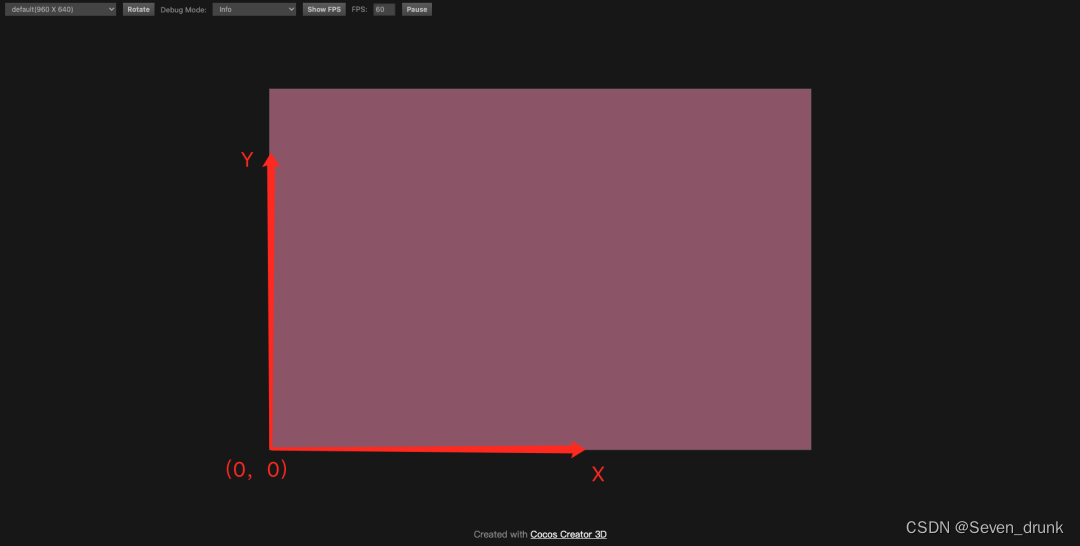
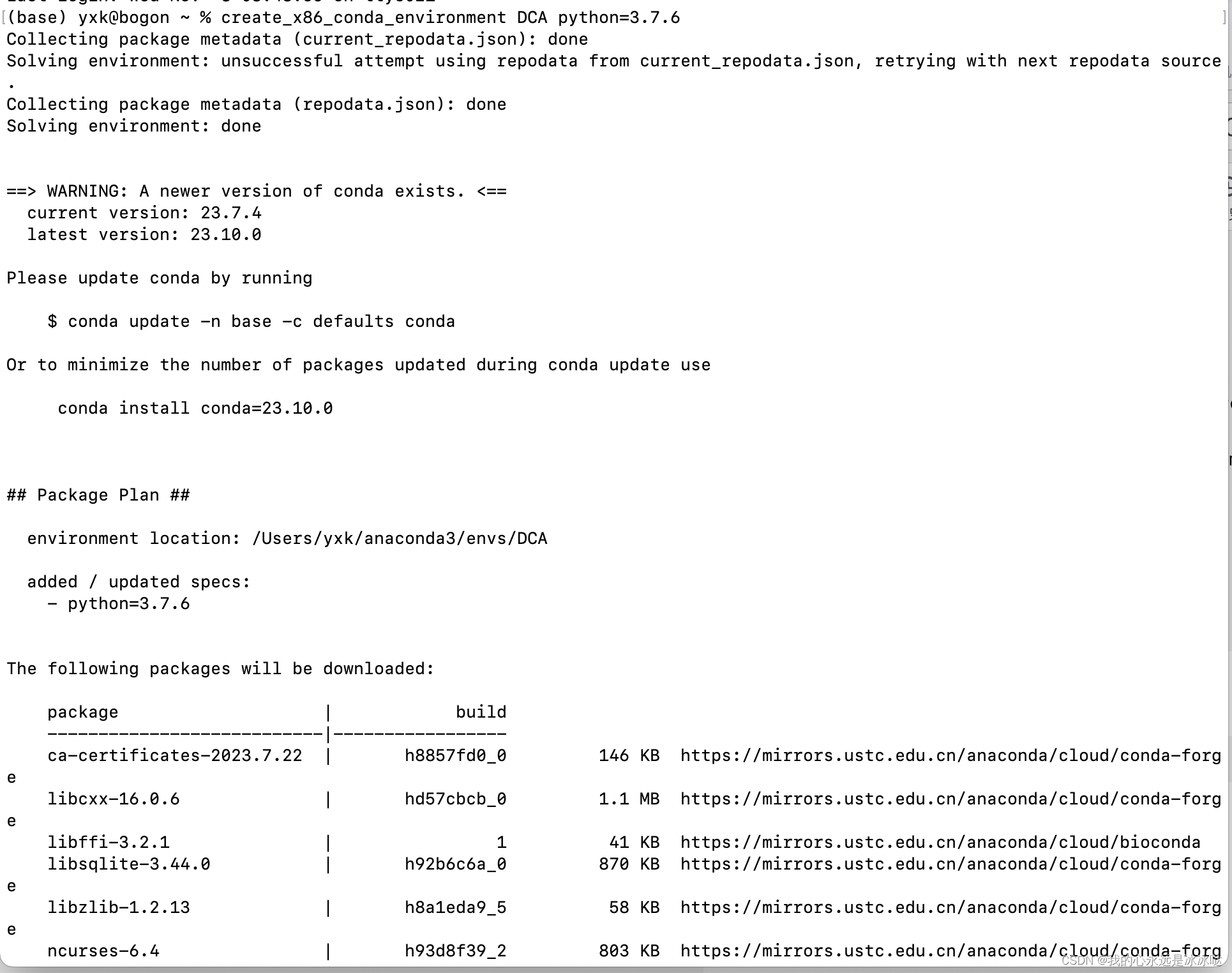
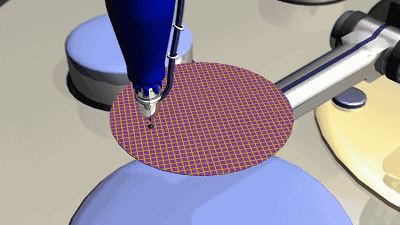
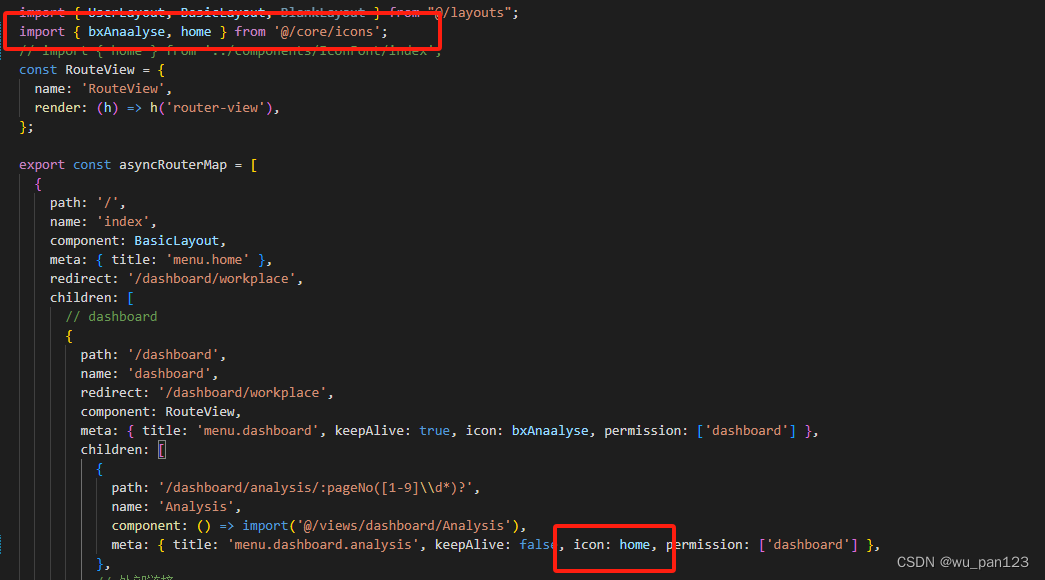





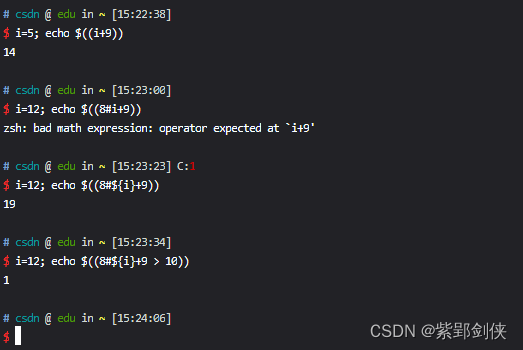


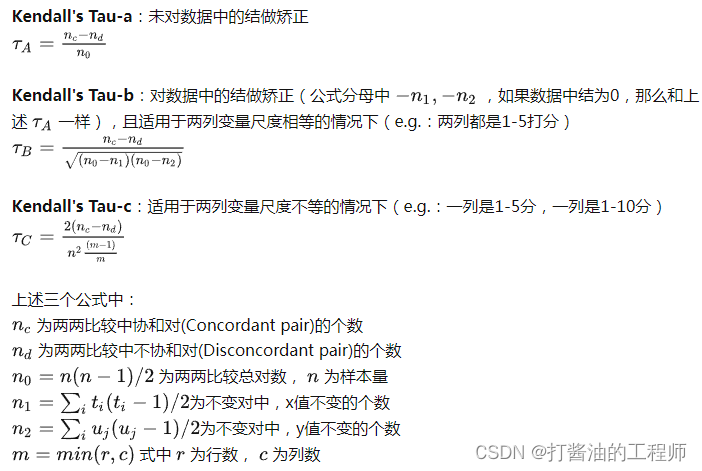

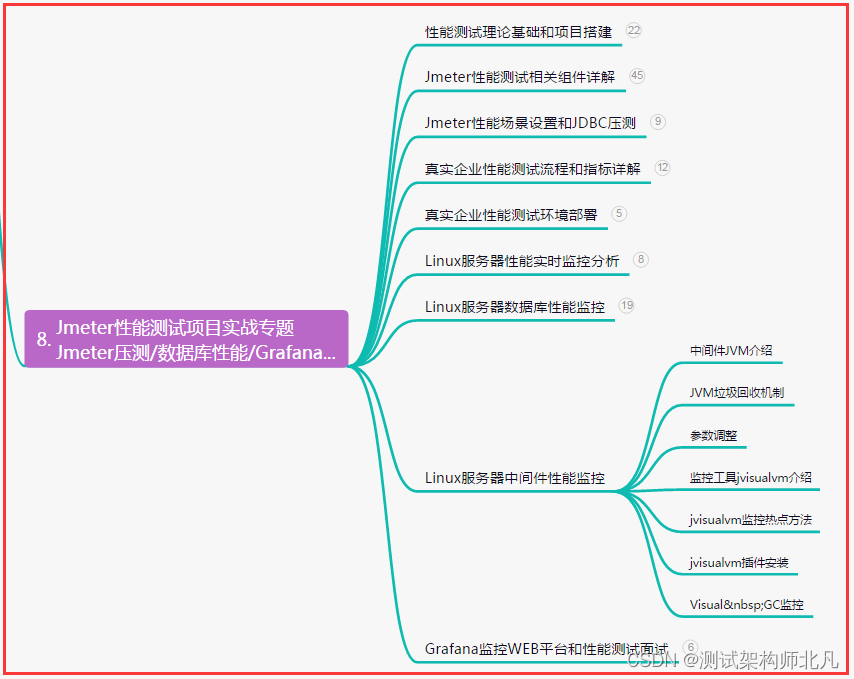

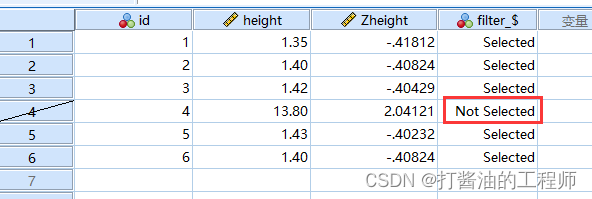

![Verilog刷题[hdlbits] :Alwaysblock2](https://img-blog.csdnimg.cn/dc32259c5c084b08b2aacc90f9f5da49.png)
